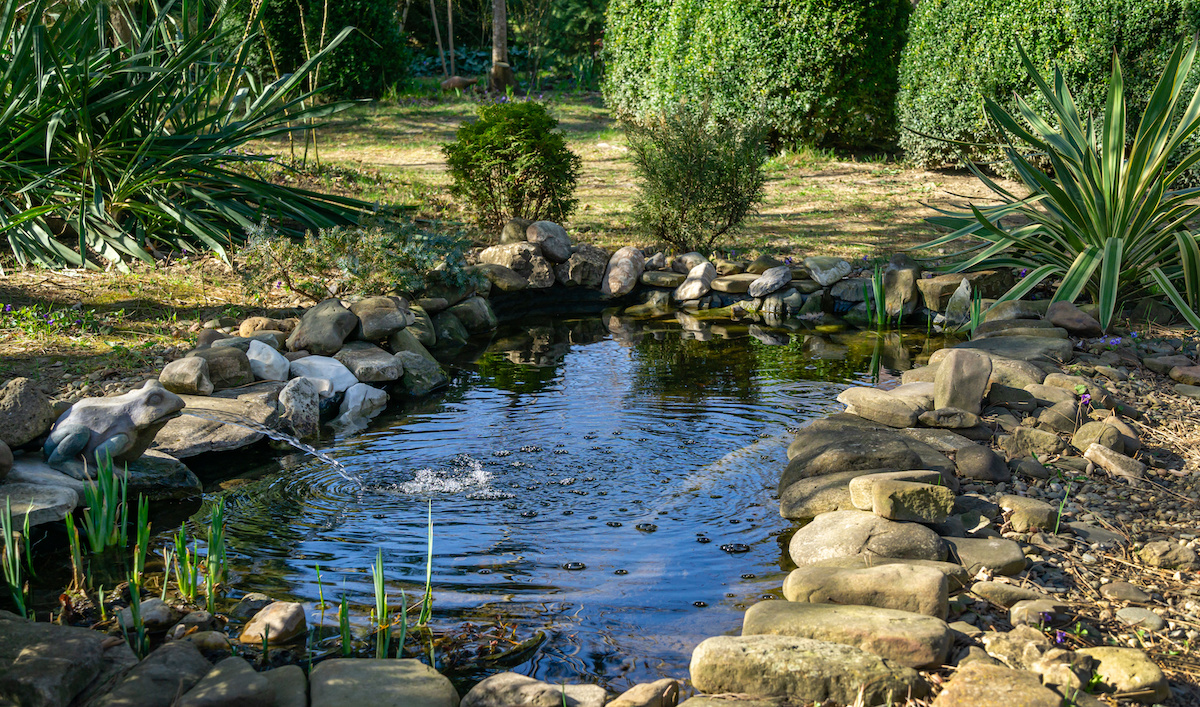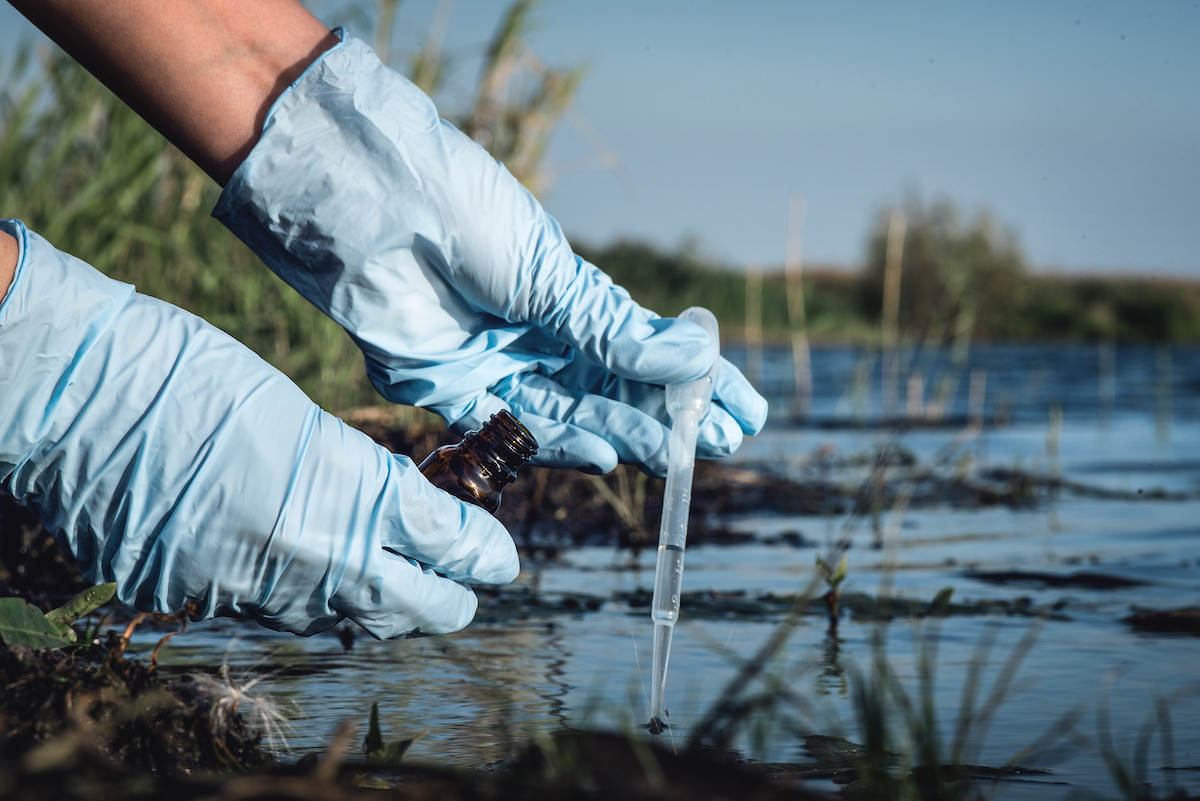Do you ever think about the health of your pond water? If not, you might be past due for testing pond water. Ensuring the health and vitality of an aquatic ecosystem hinges on maintaining optimal water quality.
Testing pond water is an essential aspect of pond management. It allows pond owners to monitor and address various parameters, thus creating an ideal environment for fish, plants, and other organisms to thrive.
If you are looking for the basics of testing pond water, Tampa Bay Ponds & Rocks has you covered!
Understanding the Basics of Pond Water Testing
Whether you own a picturesque garden pond or manage a vast fish farm, ensuring the health and vitality of your aquatic ecosystem is essential. An important step in maintaining your pond’s well-being is conducting regular pond water tests.
These tests allow you to monitor various parameters. The goal is helping to create the ideal environment for fish, plants, and other organisms to thrive. If you are new to testing pond water, you’ll need to know the different types of tests available. This includes the importance of testing for specific parameters as well as the ideal ranges for each parameter.
Different Types of Pond Water Tests
- Test kits: These are commonly available at pond supply stores and come with reagents to test for specific parameters like pH, ammonia, nitrite, and nitrate. They are easy to use and can provide accurate results with a little practice.
- Electronic testing devices: These are more advanced and often more accurate than test kits. You’ll receive instant readings for multiple parameters like pH, temperature, dissolved oxygen, and more.
- Professional testing services: For a comprehensive analysis, you may consider sending a water sample to a professional lab. They can test for a wide range of parameters and provide in-depth results.
Importance of Testing for Different Parameters
- pH: The pH level is crucial for the overall health of your pond ecosystem. An improper pH balance can stress fish and plants, leading to illness or even death. Regular testing ensures that the pH remains within the ideal range.
- Dissolved Oxygen: Oxygen levels in the water directly impact fish respiration and the overall health of the pond. Low dissolved oxygen can lead to fish stress and fatalities.
- Nutrient Levels: Excessive nutrients, such as nitrates and phosphates, can cause harmful algal blooms and poor water quality. Monitoring these levels can help prevent issues and maintain a balanced ecosystem.
Ideal Ranges for Each Parameter
- pH: The ideal pH range for most ponds is between 6.5 and 9.0. However, the specific range depends on the types of fish and plants in the pond.
- Dissolved Oxygen: A healthy pond should have dissolved oxygen levels of at least 5-6 mg/L for fish to thrive. Higher levels are even better, but they can be difficult to achieve without supplemental aeration.
- Nutrient Levels: Nitrate levels should be below 20 mg/L. Meanwhile, phosphate levels should stay below 0.1 mg/L to prevent harmful algal blooms and maintain good water quality.
How to Test Your Pond Water
Testing your pond water is essential for maintaining a healthy and balanced aquatic ecosystem. By understanding the different methods available and learning how to use them effectively, you can ensure the longevity and vitality of your pond’s inhabitants. There are several ways for testing pond water. This includes DIY kits from Tampa Bay Ponds & Rocks.

Step-by-Step Instructions for Using DIY Testing Kits
You came to the conclusion that a DIY testing kit is right for you. What should you do next? Here are some general instructions
- Purchase a reputable pond water testing kit from a local aquarium or pond supply store such as Tampa Bay Ponds & Rocks.
- Collect a water sample from your pond by submerging a clean container or test tube below the surface. Avoid collecting water near the edges. This may not provide an accurate representation of the pond’s overall water quality.
- Follow the instructions provided with the testing kit. This typically involves adding a specific number of drops of the provided reagent to the water sample or dipping a test strip into the sample.
- Compare the color of the treated water sample or test strip to the provided color chart to determine the parameter’s value. Make sure to read the results under natural daylight or a well-lit room for the most accurate color comparison.
- Record the results and monitor any changes over time. Regular testing will help you identify trends and address potential issues before they become severe.
Common Issues Found in Florida Pond Water
Florida’s unique climate and environmental conditions can give rise to several issues in pond water. It’s important to be mindful of this, because it can affect the overall health of the aquatic ecosystem. Here are the common issues that you need to keep in mind
- High Nutrient Levels: Florida’s ponds often experience high nutrient levels due to fertilizer runoff from nearby lawns and agricultural areas. Excessive nutrients, like nitrates and phosphates, can lead to water quality issues and contribute to other problems like algal blooms.
- Harmful Algal Blooms: Warm temperatures and high nutrient levels can result in harmful algal blooms. They may produce toxins that are dangerous to fish, wildlife, and even humans. These blooms can also cause oxygen depletion in the water, leading to further issues.
- Low Dissolved Oxygen Levels: Warm water temperatures, high nutrient levels, and algal blooms can contribute to low dissolved oxygen levels in Florida ponds. This causes stress and potential fatalities among fish and other aquatic organisms.
Impact of These Issues on Pond Health and Inhabitants
- High nutrient levels can lead to poor water quality, making it difficult for plants and animals to thrive.
- Harmful algal blooms not only produce toxins but also block sunlight, hindering the growth of beneficial aquatic plants and reducing overall water quality.
- Low dissolved oxygen levels can result in fish stress, illness, and even death, impacting the entire pond ecosystem.
Helpful Tips for Improving Pond Health
- Limit fertilizer use: Reducing the use of fertilizers in nearby lawns and agricultural areas can help lower nutrient levels in pond water.
- Add beneficial plants: Introducing aquatic plants that absorb excess nutrients, like water hyacinth and duckweed. They can help reduce nutrient levels and improve water quality.
- Aerate your pond: Adding an aeration system to your pond can increase dissolved oxygen levels and improve overall water quality. Aeration can also help prevent the formation of harmful algal blooms by mixing the water and reducing the buildup of nutrients.
- Regularly test pond water: Monitoring water parameters through regular testing can help identify potential issues before they become severe. This allows you to take preventive measures and maintain a healthy pond ecosystem.
Take Care of Testing Pond Water with Tampa Bay Ponds & Rocks
Taking care of your pond and its inhabitants is a rewarding endeavor. Testing pond water plays a vital role in ensuring a thriving aquatic ecosystem. Armed with the knowledge shared in this blog, you’re well-prepared to tackle any water quality challenges that may arise.
Don’t hesitate to visit Tampa Bay Ponds & Rocks for all your pond water testing needs. Our friendly and knowledgeable staff is always eager to assist you in choosing the right testing kits and equipment to keep your pond in pristine condition. Let’s work together to create and maintain a beautiful, healthy pond environment for all to enjoy.



